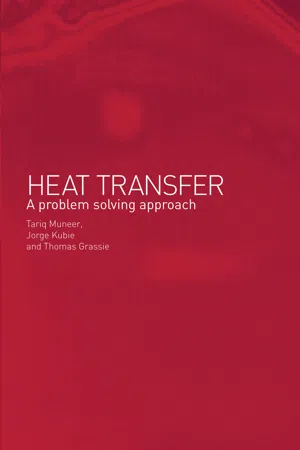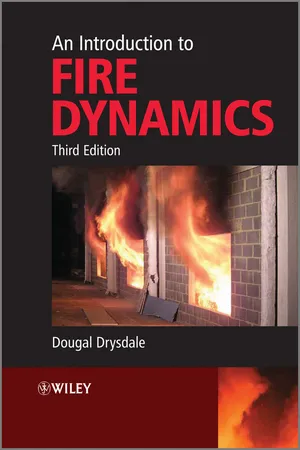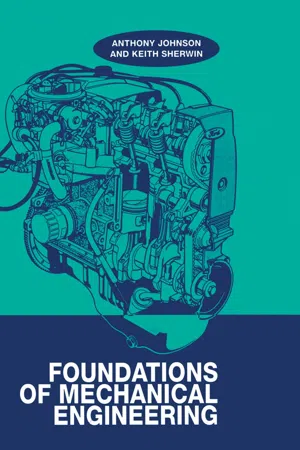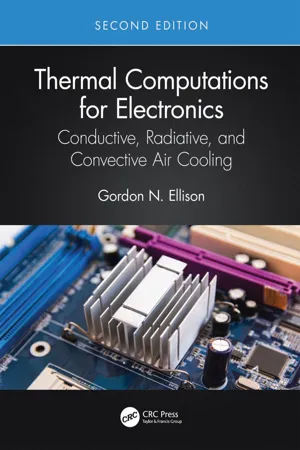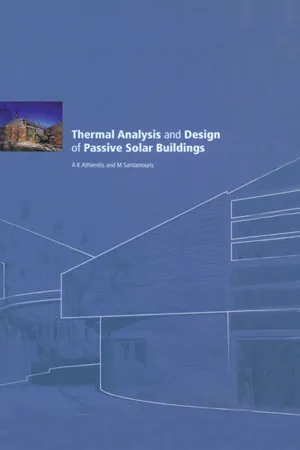Combined Convection and Radiation
Combined convection and radiation refer to the simultaneous heat transfer processes involving both the movement of fluid and the emission of electromagnetic waves. In engineering and technology, this combination is often encountered in various heating and cooling systems, such as in HVAC (heating, ventilation, and air conditioning) applications. Understanding and optimizing the interplay between convection and radiation is crucial for efficient thermal management in many industrial and environmental settings.
6 Key excerpts on "Combined Convection and Radiation"
- eBook - ePub
Heat Transfer
A Problem Solving Approach
- Kubie Jorge, Tariq Muneer, Grassie Thomas(Authors)
- 2012(Publication Date)
- Routledge(Publisher)
...10 Multi-mode heat transfer The examples of combined heat transfer considered in the previous chapters were not restricted to those cases in which only one mode of transfer was operational. However, primary emphasis was placed on the application of conduction, convection or radiation and the relevant analytical development. The isolation of each mode helps us to identify the mode of heat transfer and to develop the analytical and computational skills required to estimate the heat transfer by each mode. This chapter will bring together the material developed in the previous chapters with view to present a comprehensive treatment of combined modes of heat transfer. This chapter thus represents the culmination of knowledge gained through study of Chapters 1 – 9. A firm grasp of the physics of conduction, radiation, and boundary layer theory is thus essential before proceeding with this chapter. Thermal radiation heat transfer usually occurs in combination with convective heat transfer when the space adjacent to the surfaces is filled with any gaseous medium. One exception is however space applications where energy transfer can take place by conduction and/or radiation. If the convective heat transfer is by natural convection to gases or by forced convection to gases at high temperatures, radiation heat transfer cannot be neglected. By common experience the reader will acknowledge the fact that indeed in most situations, be they examples of heat transfer occurrence within a domestic household, or in the design of simple or complex engineering systems, thermal transmission takes place by a variety of combination of conduction, convection, and radiation. Problems introduced in earlier chapters on conduction, convection, and thermal radiation emphasised the difference of approach required for their solution...
- eBook - ePub
- Dougal Drysdale(Author)
- 2011(Publication Date)
- Wiley(Publisher)
...Convective heat transfer is associated with the exchange of heat between a gas or liquid and a solid, and involves movement of the fluid medium (e.g., cooling by directing a flow of cold air over the surface of a hot solid). It occurs at all stages in a fire but is particularly important early on when thermal radiation levels are low. In natural fires, the movement of gases associated with this transfer of heat is determined by buoyancy, which also influences the shape and behaviour of diffusion flames (Chapter 4). The buoyant plume will be discussed in Section 4.3.1. Unlike conduction and convection, radiative heat transfer requires no intervening medium between the heat source and the receiver. It is the transfer of energy by electromagnetic waves, of which visible light is the example with which we are most familiar. Radiation in all parts of the electromagnetic spectrum can be absorbed, transmitted or reflected at a surface, and any opaque object placed in its way will cast a shadow. It becomes the dominant mode of heat transfer in fires as the fuel bed diameter increases beyond about 0.3 m, and determines the growth and spread of fires in compartments. It is the mechanism by which objects at a distance from a fire are heated to the firepoint condition, and is responsible for the spread of fire through open fuel beds (e.g., forests) and between buildings (Law, 1963). A substantial amount of heat released in flames is transmitted by radiation to the surroundings. Most of this radiation is emitted by minute solid particles of soot which are formed in almost all diffusion flames—this is the source of their characteristic yellow luminosity. The effect of thermal radiation from flames, or indeed from any heated object, on nearby surfaces can only be ascertained by carrying out a detailed heat transfer analysis...
- eBook - ePub
- A. D. Johnson(Author)
- 2017(Publication Date)
- CRC Press(Publisher)
...Basic heat transfer 15 15.1 Aims To introduce the modes of heat transfer: convection, conduction and radiation. To discuss radiation between two parallel surfaces. To define the overall heat transfer coefficient for combined modes of heat transfer. To evaluate the overall heat transfer coefficient using a thermal resistance analogy. 15.2 Modes of Heat Transfer Heat is a form of energy that is transferred across the boundary of a thermofluid system as a result of a temperature difference. The greater the temperature difference the more rapidly will the heat be transferred. Conversely, the lower the temperature difference, the slower will be the rate at which heat is transferred. When discussing the modes of heat transfer it is the rate of heat transfer, Q, that defines the situation rather than the quantity of heat. There are three distinct modes of heat transfer – convection, conduction and radiation. Although two, or even all three, modes of heat transfer may be combined in any particular thermofluid situation, the three can be analysed in a different way and will be introduced separately. 15.2.1 Convection Convection is a mode of heat transfer that takes place due to motion within a fluid. In Chapter 14 it was shown that motion of a fluid is either laminar or turbulent. In the case of turbulent flow, particles can move at random within the flow. Consider a particle moving normal to a surface from position 1 to position 2, as shown in Figure 15.1. If the fluid, shown in Figure 15.1, starts at a constant temperature and the surface is suddenly increased in temperature to above that of the fluid, there will be convective heat transfer from the surface to the fluid as a result of the temperature difference. The particle at 1 starts in contact with the surface and its temperature will rise as a result of that contact. If the particle then moves to position 2, it will have a higher temperature than the fluid around it...
- eBook - ePub
Practical Guide to the Packaging of Electronics
Thermal and Mechanical Design and Analysis, Third Edition
- Ali Jamnia(Author)
- 2016(Publication Date)
- CRC Press(Publisher)
...2 Basic Heat Transfer—Conduction, Convection, and Radiation Basic Equations and Concepts As electric current flows through electronic components, it generates heat. This heat generation is proportional to both the current level as well as the electrical resistance of the component. Should heat be generated in a component and not escape, the component temperature begins to rise and it will continue to rise, until the component melts and the current is disconnected. To prevent this temperature rise, heat must be removed to a region of lesser temperature. There are three mechanisms for removing heat; namely, conduction, convection, and radiation. Conduction takes place in opaque solids, where, using a simple analogy, heat is passed on from one molecule of the solid to the next. Mathematically, it is usually expressed as Q = K A L (T hot − T cold) (2.1) In this equation, Q is heat flow, T is temperature, K is thermal conductivity, A is cross-sectional area, and L is the length heat travels from the hot section to the cold. Convection takes place in liquids and gases. The molecules in fluids are not as tightly spaced as solids; thus, heat packets move around as the fluid moves. Therefore, heat transfer is much easier than conduction. Mathematically, it is expressed as Q = h A (T hot − T cold) (2.2) In this equation, Q and T are heat flow and temperature as in Equation 2.1. However, h is defined as the coefficient of heat transfer, and A is cross-sectional area between the solid generating heat and the fluid carrying it away. Radiation takes place as direct heat transfer from one region to another. Similar to light, it does not require a medium to travel...
- eBook - ePub
Thermal Computations for Electronics
Conductive, Radiative, and Convective Air Cooling
- Gordon N. Ellison(Author)
- 2020(Publication Date)
- CRC Press(Publisher)
...CHAPTER 10 Thermal Radiation Heat Transfer Thermal energy transport by radiation is unique compared to conduction and convection in that a transport medium is not required. In fact, heat transfer by radiation between two surfaces is greater when there is no intervening material. Fortunately the absorption of radiation between surfaces within many electronic enclosures is such that this absorption can be neglected throughout this text. We had a very brief discussion of radiation heat transfer in Chapter 1 and a couple of application examples in Chapter 8. In this chapter, we will go into greater detail in order to enhance your understanding of the subject. We will begin with the basics of radiation emission and absorption for both ideal and actual surfaces, followed by a discussion of the geometric aspects of the phenomenon, and two methodologies useful when multiple, i.e., more than two, surfaces are involved. The chapter concludes with a detailed evaluation of radiation from rectangular U-channels simulating plate-fin heat sink radiation. 10.1 BLACKBODY RADIATION Radiation from solid objects such as components, cabinet walls, and heat sinks is a surface-related phenomenon. The radiation is electromagnetic in character with a theoretical basis found in the realm of the quantum physics of solids. Briefly, however, it may be thought of as originating at microscopic electronic oscillators emitting radiation over an extremely broad bandwidth. The maximum monochromatic radiation flux per unit wavelength interval into a half space, or monochromatic emissive power, is described by Planck’s radiation law, Eq. (10.1), and is referred to as blackbody. radiation. E λ b = c 1 λ 5 (e c 2 / λ T ′ − 1) Planck ’ s radiation law (10.1) where E λ b [ W / (m 2 ⋅ μ m) ] ≡ monochromatic emissive power λ [ μ ] = wavelength in microns (1 μ or1 μ m=10 − 6 m) T ′ [ K ] ≡ surface temperature = T [ ° C ] + 273.16 c 1 ≡[--=PLGO-SEPARATOR=--...
- AK Athienitis, M. Santamouris, M. Santamouris(Authors)
- 2013(Publication Date)
- Routledge(Publisher)
...Chapter 2 Transient heat transfer and thermal storage 2.1 Transient beat conduction Conduction is the process of heat transfer in which heat is transferred due to the presence of a temperature gradient in a body without macroscopic movement of the molecules. Molecules within a high-temperature region have a higher internal energy, and through microscopic agitation transfer some of their energy to adjacent ‘cooler’ molecules. At a macroscopic (not molecular) level, the heat flow was first described by Fourier’s conduction law. In the x, y, z directions, we have the following heat flows: where k x, k Y and k z are the thermal conductivities (W/mK) in the three directions. For most materials, which are isotropic, the thermal conductivity is equal in all directions. Now considering a control volume of dimensions d x d y d z, and applying an energy balance over a time interval d t we obtain the three-dimensional heat flow equation: where S is an internal heat source (W/m 3), c is specific heat capacity and p density. The thermal capacity of a building, most of it due to thermally massive materials - so-called thermal mass - stores heat during the day and modulates room temperature swings. Solar radiation incident on the exterior building envelope as well as high outside temperature cause heat flow into the building interior. Solar radiation absorbed by a wall and outdoor temperature may be combined into an equivalent temperature known as sol-air temperature T eo (ASHRAE 1989). Part of the solar radiation incident on the wall outer surface is absorbed while the remainder is reflected. If the wall is covered with transparent insulation, then part of the incident solar radiation is also transmitted. A portion of the absorbed solar radiation plus heat gain from outside air is conducted into the wall; part of this conduction heat is stored in the solid wall layers, raising their temperature while the remainder reaches the room interior surfaces...
